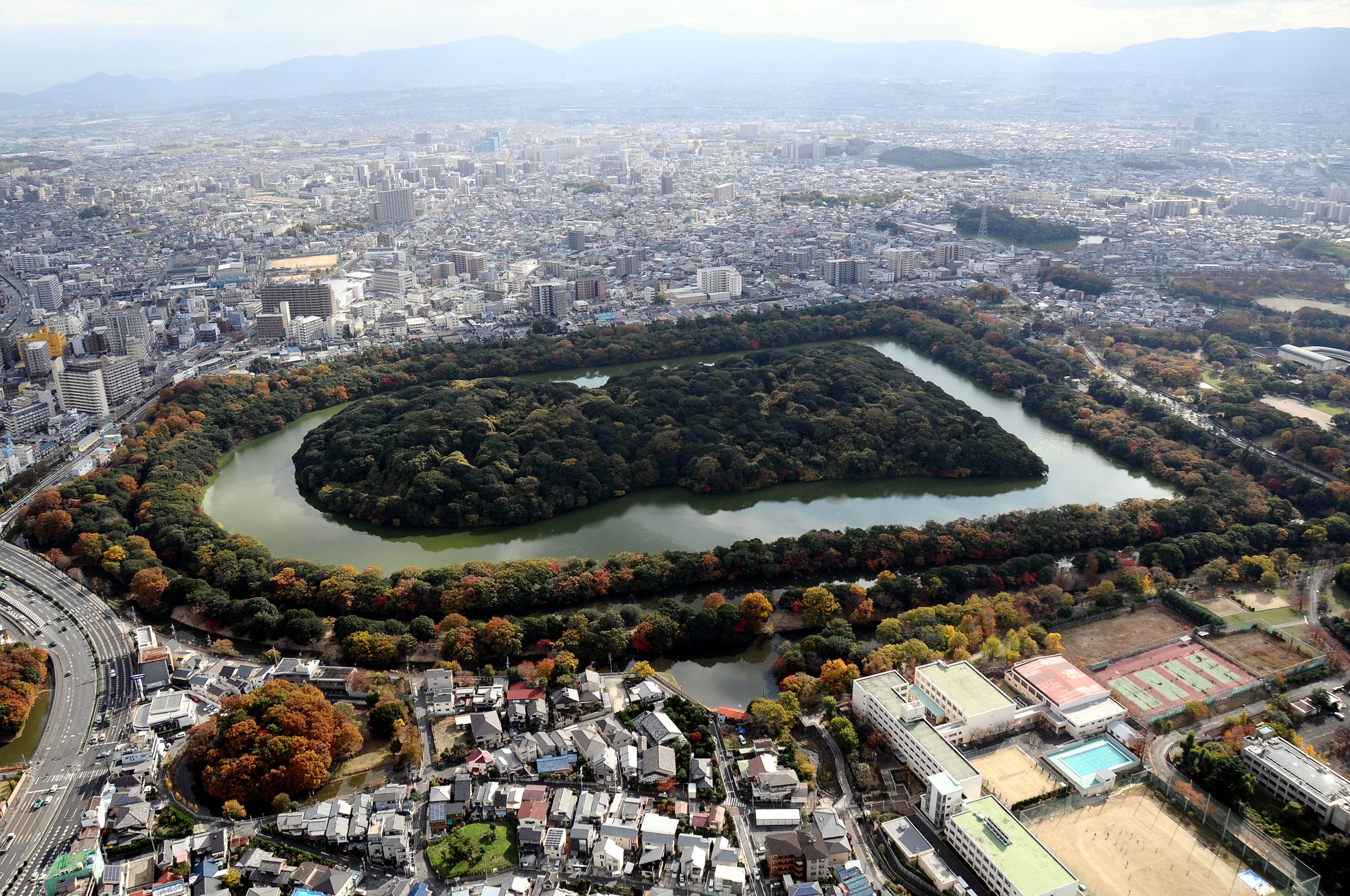Japan’s oldest book, the Kojiki. It dramatically illustrates the history of Japan from the beginning of the world, the appearance of the deities, to the Imperial succession. Behind each impressive episode, there exist numerous “mysteries” that are yet to be solved even today. By exploring each, we will think about the origin of Japanese beliefs and culture.

Sakai City, Osaka Prefecture:Daisen Mounded Tomb supposed to be the Mausoleum of Emperor Nintoku
A historical chronicle published for structuring a national system
The Kojiki is a text written in Chinese characters and was written to chronicle a history centering on the Imperial family and to transmit this information to future generations.
At the time, in order to structure a national system, various policies were undertaken using China as a model, such as compiling chorographies and developing a system of law, etc. Editing the Kojiki and the Nihon Shoki (also known as the Chronicles of Japan) as historical chronicles can be seen as part of such policies.
The Kojiki : Read Aloud
By the way, how did the editors of the Kojiki expect people to read it?
It is possible that the Kojiki was intended to be read aloud. For example, originally, Japanese poems were sung, and The Manyoshu (the oldest existing collection of Japanese poetry) rendered them into text. However, the fact that songs were turned into texts does not mean that they were not still supposed to be sung.
Even though the Kojiki includes poems, it is basically a prose work. On the other hand, what the editors did initially was to give voice to Hieda no Are who was first made to chant the stories and the Imperial family genealogy.
The Ingenuity of Ono Yasumaro and the Skill of Hieda no Are
Ono Yasumaro, the editors of the Kojiki, relayed how to read difficult Chinese characters, while also transcribing Japanese words using Chinese characters phonetically. It’s highly probable that the reason why he did this was to allow for the texts to be read via the spoken Japanese language.
Hieda no Are was said to be able to memorize sentences after seeing and hearing them only once. While it may have been possible for Hieda no Are to orally recite information, others, including later generations, would need a script in order to recite the information aloud.
The Kojiki as an Epic Poem
Many dramatic tales are relayed via the Kojiki. Stories passed down orally in the form of epics would be a necessity for keeping such history in the minds of the people and for passing it on to future generations.
It is generally accepted that there are no epic poems of heroes in Japan. However, traces of what may have been epics involving heroic gods and others can be found in the Kojiki, such as in the sing-song tale of Yachihoko-no-kami (also known as “Okuninushi-no-kami”—the god of nation-building, farming, business, and medicine), the legend of Emperor Jimmu in which he set off for an expedition to the east to unite the nation, the legend of Yamato Takeru (a legendary Japanese prince) in which he also set off for an expedition to eastern lands, and the love stories of Emperor Nintoku and Emperor Yuryaku, etc.
-Kokugakuin University has been selected “as a place for the promotion of the study of the Kojiki” by the private university branding project of the Ministry of Education in 2016.-

published in The Japan News on 21/1/2019
Masahiro TANIGUCHI
Research
Japanese literature of ancient times (Kojiki, Nihon-shoki, topography)
Papers
“The Old Man Says” in izumono-kuni-fudoki(2017/05/10)
Tatenui County and Mount Kannabi in Izumonokuni-fudo-ki : Reading What the Genius Says(Reading)(2009//)

